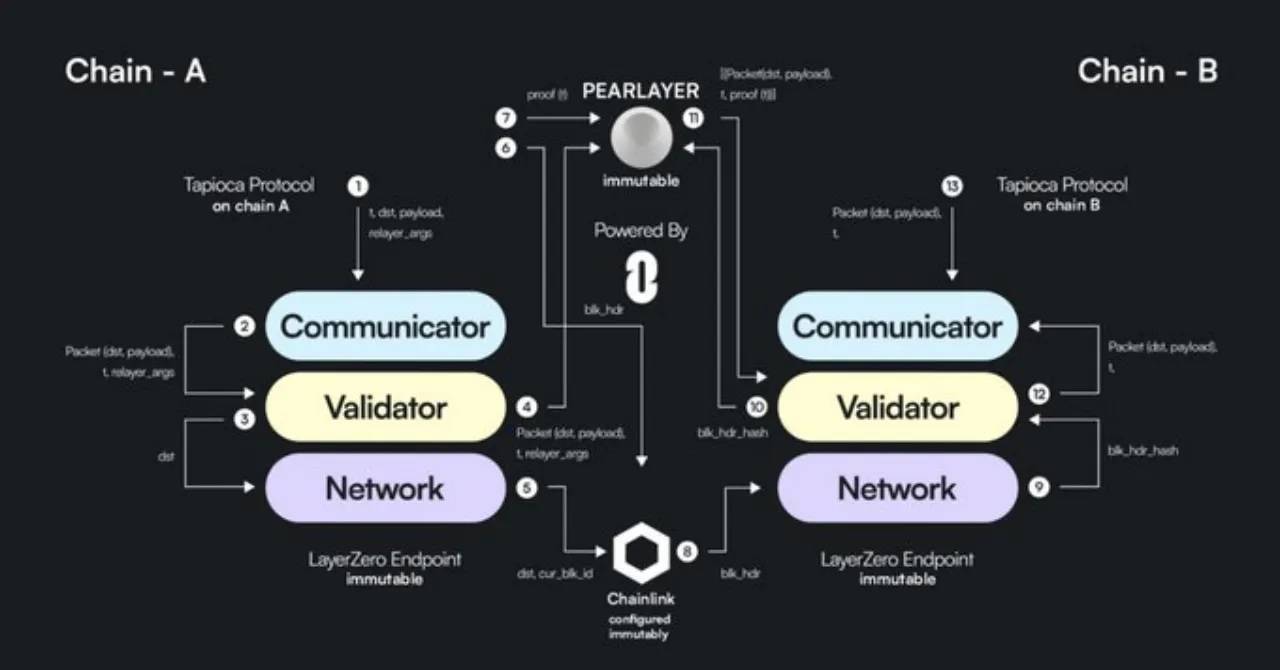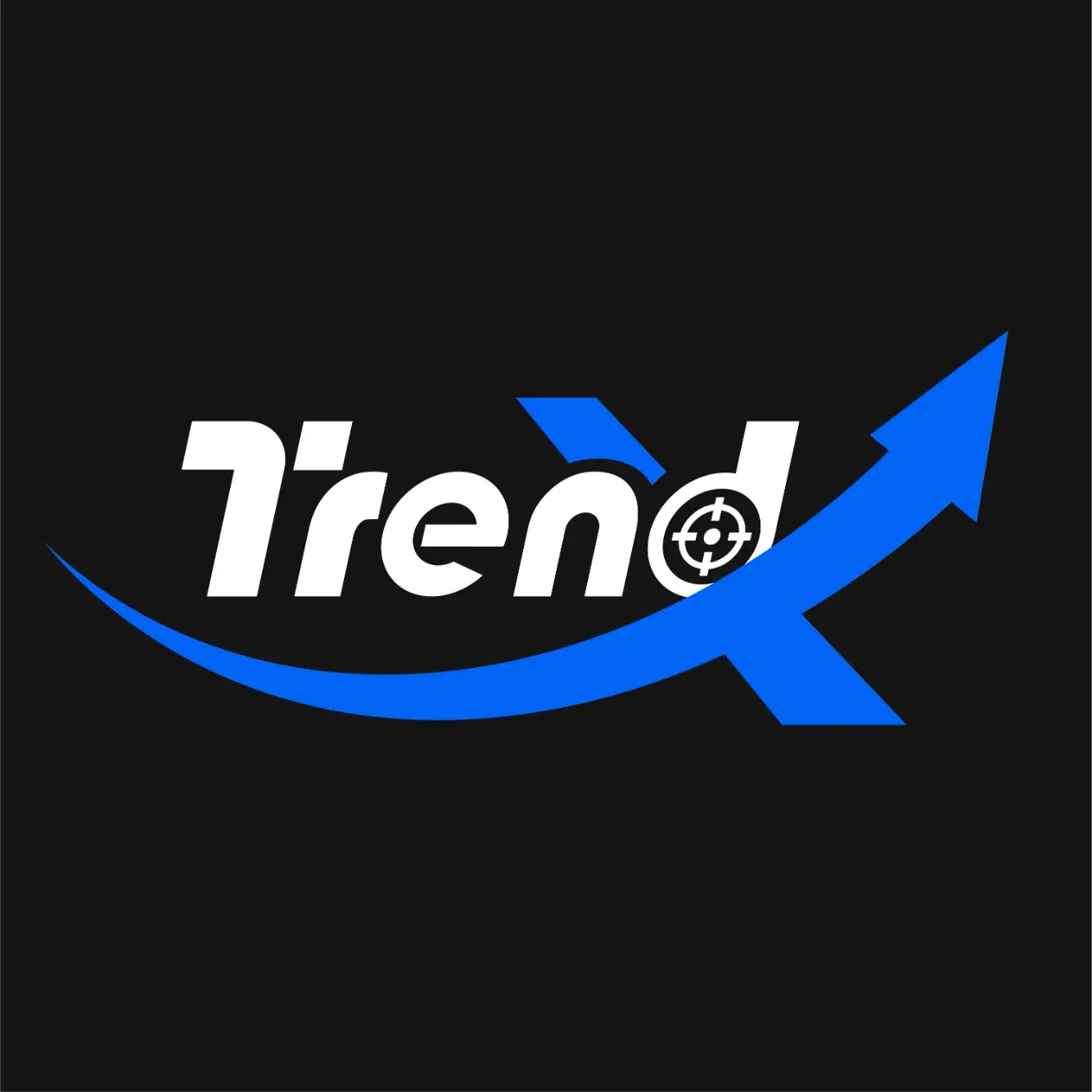Understanding TapiocaDAO at a glance: Solving the DeFi liquidity fragmentation issue with LayerZero
Author: veDAO Research Institute
DeFi remains the foundation of the entire industry, but the issue of liquidity fragmentation is a significant challenge that the DeFi sector currently faces. To address this problem, the conventional solutions mostly involve strategies such as cross-chain bridges, intermediary chains, and multi-chain Dapps, which have their pros and cons. In addition, there is a solution discussed in this article, TapiocaDAO, which employs an all-chain LayerZero solution; in fact, this solution is not unique to TapiocaDAO, as Wormhole was one of the representatives of this solution before it suffered a hacker attack last year, resulting in losses of up to $326 million.
However, we should not view Wormhole's failure as a failure of the all-chain LayerZero solution. TapiocaDAO has its own understanding and technical advantages regarding the all-chain LayerZero solution. Below is a detailed introduction to TapiocaDAO, and by reading the following, we may gain a clearer understanding of TapiocaDAO itself and what it aims to achieve.
This article is divided into two parts. We will start with the first part, delving into the details of the Tapioca infrastructure:
Singularity
Big Bang
YieldBox
twAML
DSO
PearLayer
Remember: these are not just random terms. They are the building blocks of TapiocaDAO's unique DeFi ecosystem, with each module playing a distinct role in creating a seamless financial hub. The goal of TapiocaDAO is to address the issue of liquidity fragmentation in DeFi, enabling lending and utilization of various assets across any network. This initiative enhances capital efficiency by increasing lending opportunities through unified liquidity.
The liquidity fragmentation between various chains and protocols in DeFi reduces capital efficiency. The liquidity of the same asset is not shared between two different chains, leading to significant slippage. Thanks to LayerZero's generalized messaging network, TapiocaDAO has become the first "all-chain" money market protocol. Its goal is to eliminate the well-known bridge-related risks, including smart contract vulnerabilities and user friction.
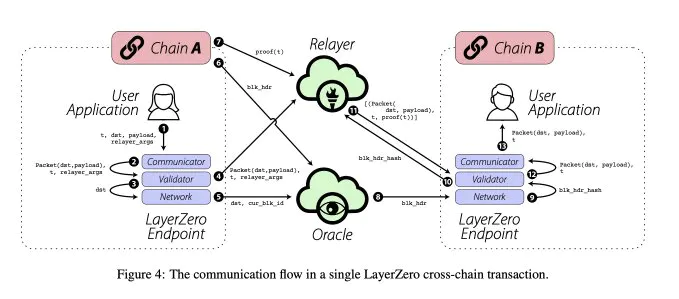
TapiocaDAO's unique tokenomics involves $TAP, twTAP, oTAP, and $USD0 tokens, each targeting specific aspects of DeFi. From risk management to yield optimization, these tokens form a dynamic ecosystem designed to drive the growth of the protocol.
Lending Market: Singularity
We will start with Singularity, a modified version of BoringCrypto's Kashi. Singularity serves as a lending market that diversifies risk by isolating markets, thereby supporting riskier assets without jeopardizing the entire protocol.
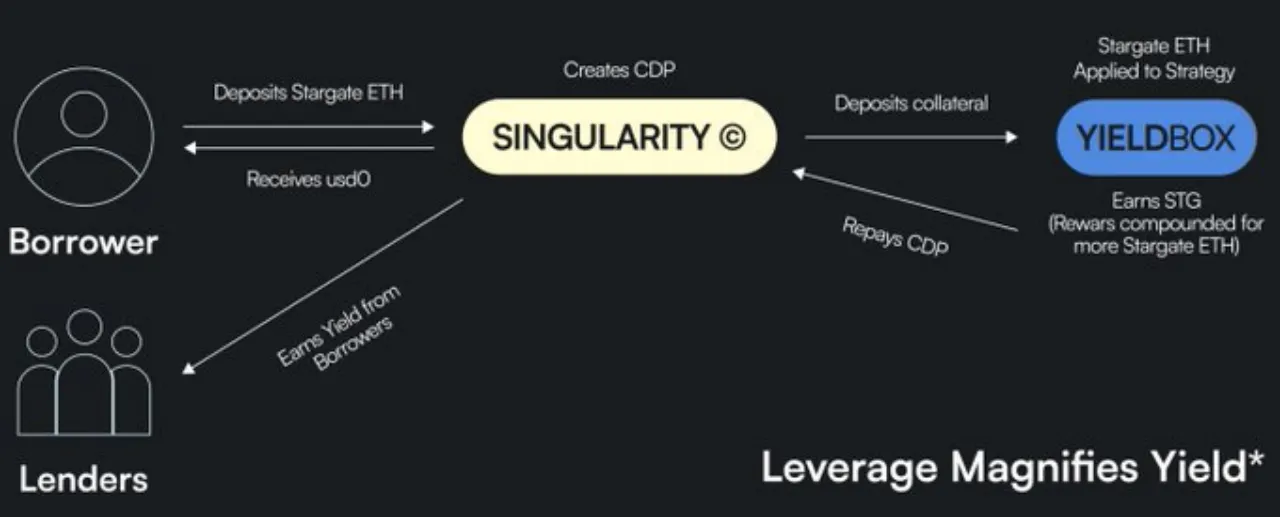
Compared to traditional lending protocols, all assets share a single liquidity pool. This means that if one asset fails, it could have catastrophic effects on the entire system. On the other hand, Singularity takes a different approach. It allows users to create separate lending pairs. Each lending pair is isolated from others, meaning that if one asset fails, it only affects that specific lending pair and not the entire pool.
Additionally, it allows for one-click leverage, automatically obtaining up to 5x leverage with a single click. Its goal is to optimize the utilization of volatile assets by sharing market liquidity across multiple chains.
Stablecoin Minting Mechanism: Big Bang
Big Bang is another evolution of Kashi, using Gas tokens as collateral to mint the USD0 stablecoin. This concept introduces a self-repaying loan protocol. In other words, it allows users to mint USD0 by providing accepted assets as collateral.
To ensure the stability of the protocol, Tapioca employs a mechanism called Collateral Debt Ratio (CDR), which adjusts the supply of USD0 based on market demand. By adjusting interest rates, this will encourage arbitrage, providing more favorable conditions for borrowers or lenders.
Permissionless Token Vault: YieldBox
YieldBox (BentoBox V2) is a permissionless token vault. Compared to BentoBox V1, YieldBox introduces upgrades that optimize gas consumption and simplify the token approval process. It supports NFTs, reset tokens, and isolation strategies. Through isolation strategies, it allows tokens to rebalance between different risk-isolated yield strategies. Tapioca achieves this by using proxy contracts on Arbitrum outside of the supported chains, enabling message passing across chains.
BentoBox is essentially a token vault where users can deposit tokens and use them across multiple DeFi applications without withdrawing them from the vault. YieldBox builds on this foundation but refines and expands its functionality. It aims to achieve optimal yields on deposited assets. To this end, it utilizes various strategies involving yield farming, lending, staking, and more.
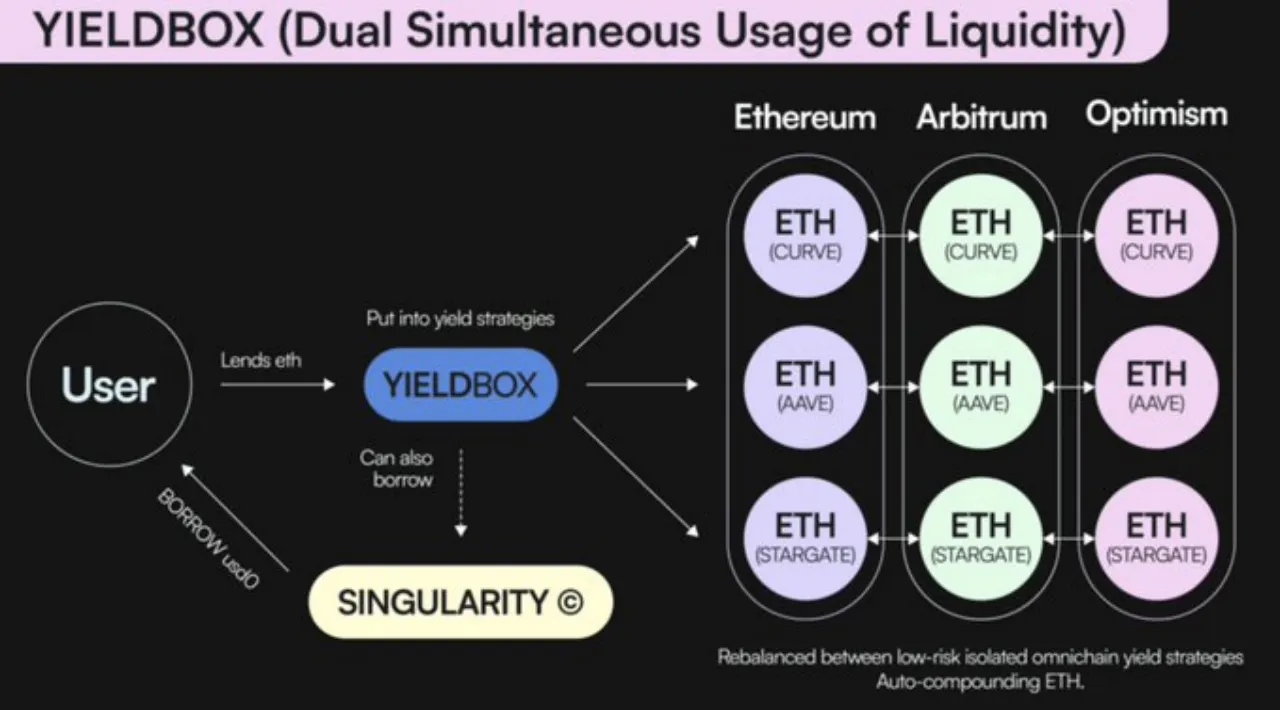
YieldBox continuously tracks and adjusts to maximize the yields for token holders. Simply put, when users deposit tokens into YieldBox, the system automatically utilizes these tokens to participate in yield-maximizing strategies.
Economic System: twAML
twAML is an economic system that dynamically achieves maximum allocation efficiency based on economic activity. It employs game theory, where users' custodial commitments continuously adjust AML, a metric defined by consensus-driven and free-market principles. In traditional liquidity mining models, irresponsible issuance and high inflation often lead to unprofitable practices, resulting in a steady decline in the value of protocol tokens, reduced yields, user interest, and liquidity.
TapiocaDAO has released a detailed whitepaper aimed at addressing these challenges and has improved models from OlympusDAO, GMX, Convex & Aura, OLM, and Keep3r to better address their limitations.

AML measures a user's system impact based on the scale of their contributions and the total number of participants at the time of interaction. System incentives can oscillate based on user behavior and system status, thereby avoiding stagnation and promoting new growth states. Tapioca's AML is influenced by Keep3r's OLM (Options Liquidity Mining), curbing the immediate profit-taking behavior of liquidity miners. It ensures a sustainable balance between user incentives and long-term treasury, thereby critically creating a POL (Protocol Captured Liquidity).
DAO Call Options: DSO
DSO (DAO Call Options) is a mechanism that allows for the creation of POL (Protocol Captured Liquidity), long-term TVL, and twAML. This concept serves as a key building block for operating their unique economic model.
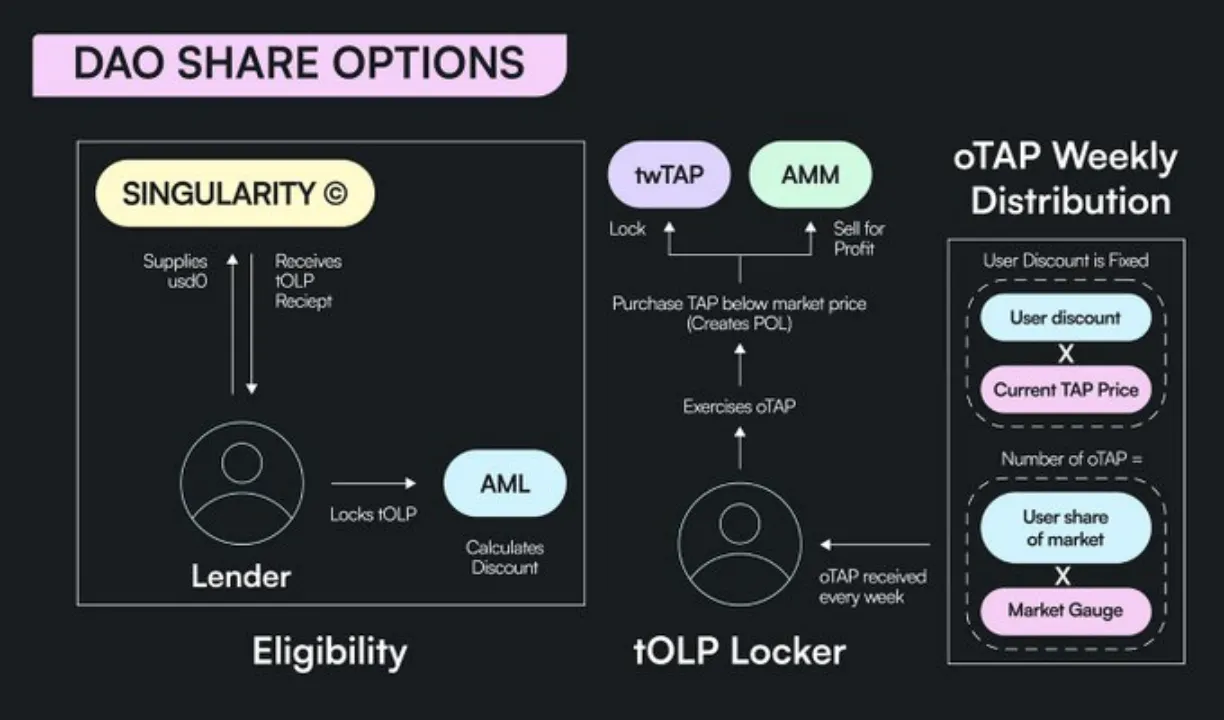
DSO enables OLM to operate effectively. Inspired by Andre Cronje's Keep3r, this mechanism makes it possible to create POL, long-term TVL, and twAML.
Users providing liquidity to the credit market will receive token receipts (tOLP), which they can choose to lock for a period. At the end of this period, they will receive an oTAP with a specified strike price, allowing them the option (but not the obligation) to purchase TAP tokens at a favorable price.
The specific role of DSO is to facilitate the creation of Protocol Captured Liquidity (POL), encourage long-term Total Value Locked (TVL), and support the operation of the twAML mechanism.
Tapioca's Relay: PearLayer
PearLayer is Tapioca's relay, utilizing LayerZero's Pre-Crime mechanism to support chains such as Arbitrum, Optimism, Ethereum, Avalanche, Base, Berachain, ZKSync, Starknet, Mantle Network, Cosmos, Sei, and Polkadot.
With Pre-Crime, PearLayer can verify the potential outcomes of cross-chain messages before delivery, ensuring the integrity of the protocol. Tapioca's oracle solution is sourced from Chainlink price data.
